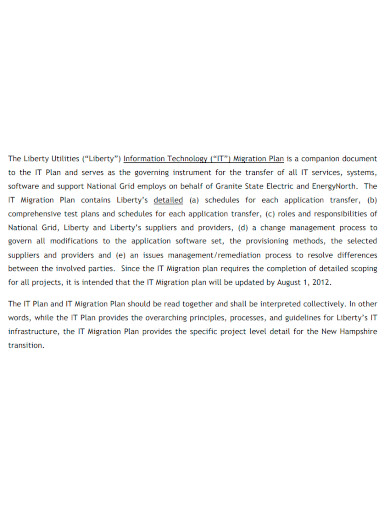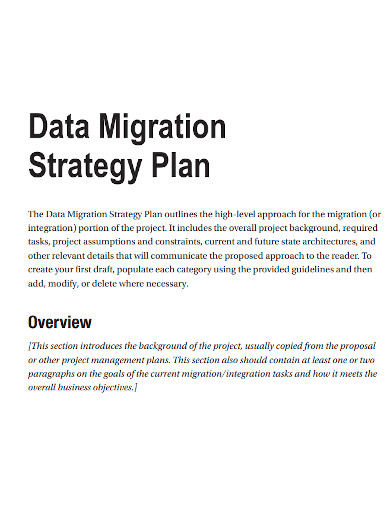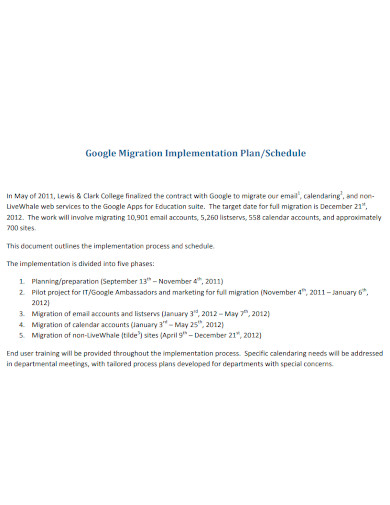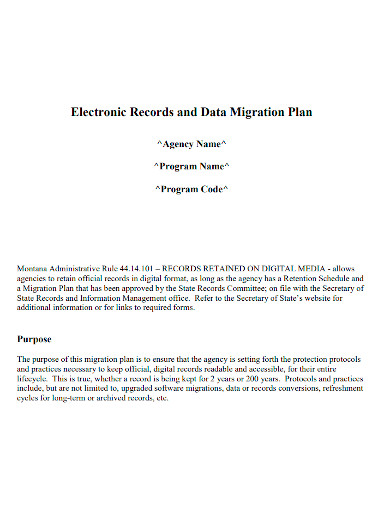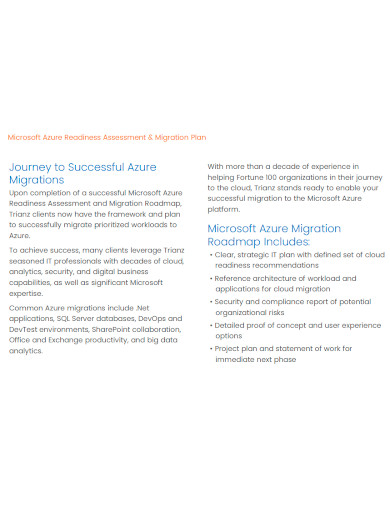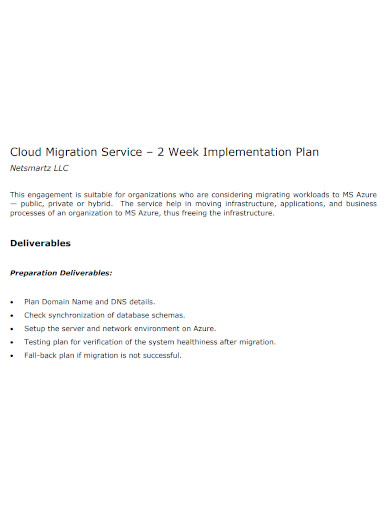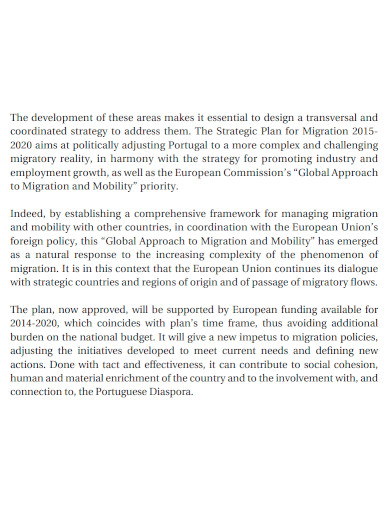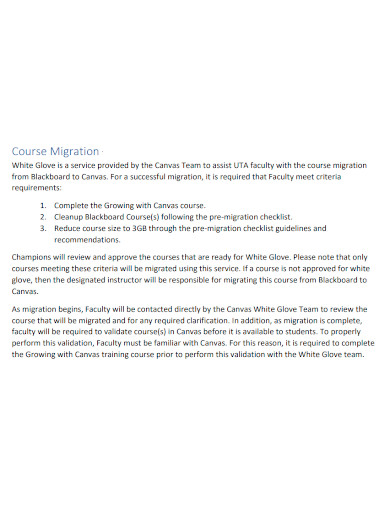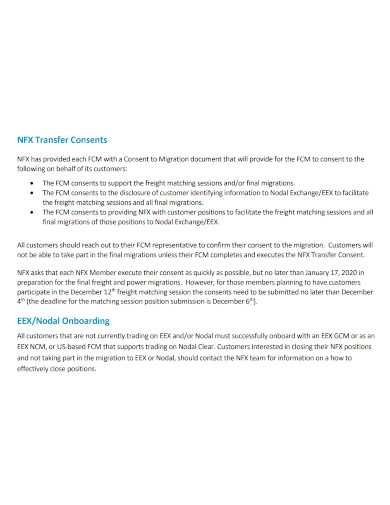When you are faced with a task that requires you to undergo the migration planning phase, you must be able to grasp and fully understand the application dispositions. There are a lot of methods to which how an application or data migrates. However, it simply depends on the overall data center strategy. You have to detail each of the migration wave by simply bundling up the applications, specific infrastructures, and support requirements in order to get to your target destination. The target can either be a public or private cloud, colocation or managed service. In this article, you will be able to learn more about conducting or creating a migration plan.
10+ Migration Plan Samples
Creating a migration allows us in mitigating the risks and minimizing the downtime, setting custom asset bundles that are originally based on the business dependencies, creating a device shutdown which can be used for a particular migration event, securing a playbook for the purpose of the use of migration team members, and taking a risk analysis as the project progresses. You have to make sure that the stakeholders and decision makers have something to look upon with regards to the project status. This will give you a guarantee of having a smooth migration every time.
1. Implementation and Migration Plan Template
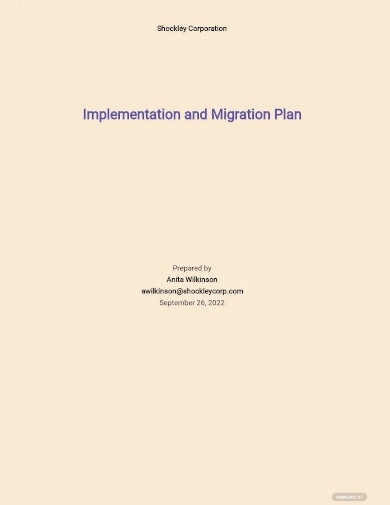
2. Migration Plan Sample
3. Migration Strategy Plan
4. Migration Implementation Plan and Schedule
5. Data Migration Plan
6. Standard Migration Plan
7. Migration Plan Format
8. Migration Service Implementation Plan
9. Formal Migration Plan
10. Campus Course Migration Plan
11. Professional Migration Plan
Steps to Include in the Migration Plan
Having a detailed migration plan can make you be at a step closer to having a successful data migration especially when it involves processes like selecting, preparing, extracting, transforming, and transferring data to its right form and quality. Below are the steps that will guide you in having a successful data migration.
- Identify the format, location, and sensitivity of the data – you should be able to identify the type of data you want to migrate, the format, where it lives, etc. This will help you in gaining more knowledge about the project. You have an opportunity to spot risks and look for security measures to take. Make sure that you will choose the right method in which you are more comfortable with.
- Plan for the size and scope of your project – make a plan that will talk about the resources you need for the migration process. You should also include a budget for it. Take note that you have to maintain a good communication to your stakeholders with regards to the timeline and down time.
- Backup all the data – always make sure that you have backed up all the data. If you encounter problems such as incomplete, corrupt or missing files, at least you have already prepared for it so that it would be easier for you to restore the data back to its original state.
- Provide an assessment for the staff and migration tool – if you are already working with a large number of files, your migration will become too complex and there is a tendency that you are already migrating a very sensitive information.
- Execute the migration plan – make sure that you have the right system permissions so that you will be allowed to extract data migrating to the target which probably come from a source system. Also, make sure that all the data are cleaned and deduplicated.
- Testing of final system – make sure that there are no problems with regards to connectivity. Your main goal is to ensure that the data migrated is secure, correct, and in proper location.
- Follow-up and maintenance of the migration plan – you may consider conducting a full audit of the system to make sure that everything is on track once the process has been completed.
FAQs
What are the critical factors that must be considered in creating a migration plan?
It includes knowing the data, cleanup, maintenance and protection, and governance.
What are the best practices for data migration?
It includes backing up the data before the execution, sticking to the strategy, and testing.
What are the key steps in data migration strategy?
Explore and assess the source, define and design the migration, build the migration solution, conduct a live test, flipping the switch, and audit.
By making use of the details mentioned above, you will be able to successfully move the data to your target system. You just have to remember that it is important to back up your files before starting the process. In case of experiencing problems, you will be able to easily manage and recover the data.
Related Posts
FREE 9+ 30-Day Marketing Plan Samples in PDF | MS Word | Apple Pages | Google Docs
FREE 3+ Sales Team Action Plan Samples in PDF | MS Word | Apple Pages | Google Docs
Marketing Plan For Small Business Samples
FREE 7+ Fashion Business Plan Samples in PDF
FREE 10+ Sprint Planning Samples In MS Word | Google Docs | PDF
FREE 10+ Wedding Planning Samples in MS Word | Apple Pages | Powerpoint | PDF
FREE 9+ Monthly Study Planner Samples in PSD | Illustrator | InDesign | PDF
FREE 9+ Sample Curriculum Planning Templates in PDF | MS Word
FREE 10+ Teacher Development Plan Samples in MS Word | Google Docs | Apple Pages | PDF
FREE 10+ Basketball Practice Plan Samples in PDF
FREE 12+ School Business Plan Samples in PDF | MS Word | Apple Pages | Google Docs
FREE 7+ Client Strategic Plan Samples in PDF | MS Word
FREE 11+ Trucking Business Plan Templates in PDF | MS Word | Google Docs | Pages
FREE 7+ Small Hotel Business Plan Samples PDF | MS Word | Apple Pages | Google Docs
FREE 14+ Bakery Business Plans in MS Word | PDF | Google Docs | Pages

